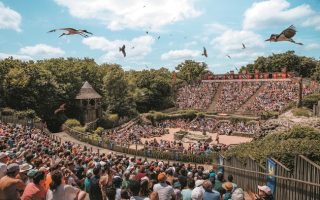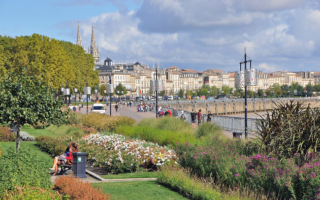Plenty of Horsepower: A Short Break in Le Perche
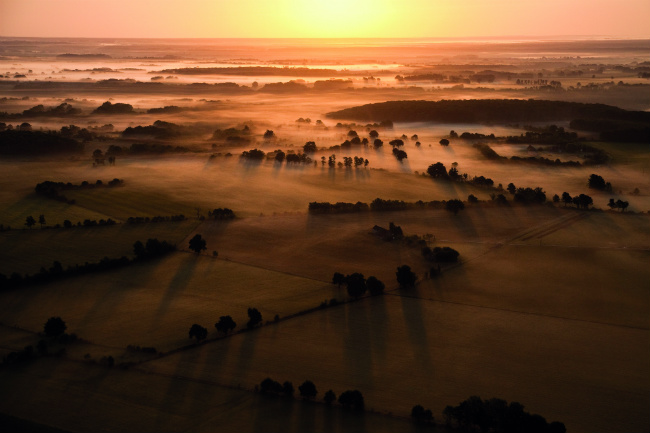
Gillian Thornton lets someone else take the reins on a short break in Le Perche
“Marchez!” Ears pricked, the two huge horses in front of me launch into action with a rattle of harnesses and clattering of iron-shod hooves. And as we clop out of the yard of the Ferme de l’Absoudière, two broad backsides fall into a syncopated roll, one black, one dappled grey. It’s a tad bumpy up here beside the driver as our light cart leaves smooth asphalt for field and forest trails, but a traditional carriage ride is a rare privilege for those of us more used to mechanical horsepower, and I’m loving it.
There’s certainly no more authentic way to explore the Perche Regional Nature Park (PNR) than behind a pure-bred Percheron or two. And I’ve a front row seat for a two-hour excursion through this glorious corner of Normandy’s ‘Deep South’. Ideal for a long weekend or as a stopover en route to the Channel ports, the Perche is still unknown to many fans of Normandy’s lush countryside.

Percheron horses in action. Photo: Gillian Thornton
Created in 1998, the Perche straddles the départements of Orne in Normandy and Eure-et-Loir in Centre-Val de Loire, its mission to protect and develop the local patrimoine, or heritage, from the natural and built landscape to agriculture and rural traditions.
Splashed with areas of ancient forest and dotted with pretty villages of mellow stone, the rolling bocage (hedgerow) countryside of the Perche is an open invitation to explore on foot, by bike, or, of course, behind a horse. But it’s also home to a growing number of brocantes (flea markets) and antique shops, artisan businesses, tea rooms and food producers that attract short-breakers from Paris as well as visitors from across the Channel.
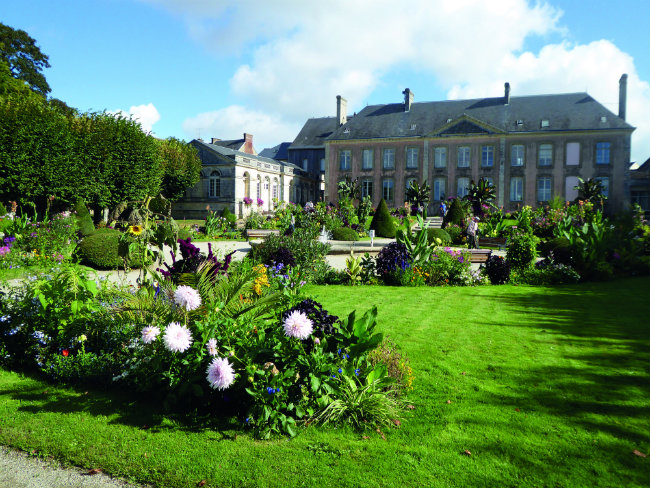
The public gardens and town hall in Mortagne-au-Perche. Photo: Gillian Thornton
A PLACE TO SHARE HAPPINESS
“Life is good here,” says Cécile Schmitt over coffee and homemade plum tart at Chez Nous Campagne. Her stylish combination of tea room and brocante outside Mortagne-au-Perche is surrounded by lush farmland. So it’s no big surprise that Cécile’s catchy slogan is “Chez nous, on partage le bonheur”. Here we share happiness.
Cécile and her husband left Paris to raise their children in the Orne countryside and never looked back. Now she divides her time between upcycling furniture, working with local craftspeople and baking tarts for the tea room. Oh, and tending the garden in between serving customers at her shop and her stylish gîte. The next project is to build a second gîte at first-floor level in the adjoining field. “So that guests can enjoy cows grazing underneath them!” she laughs.
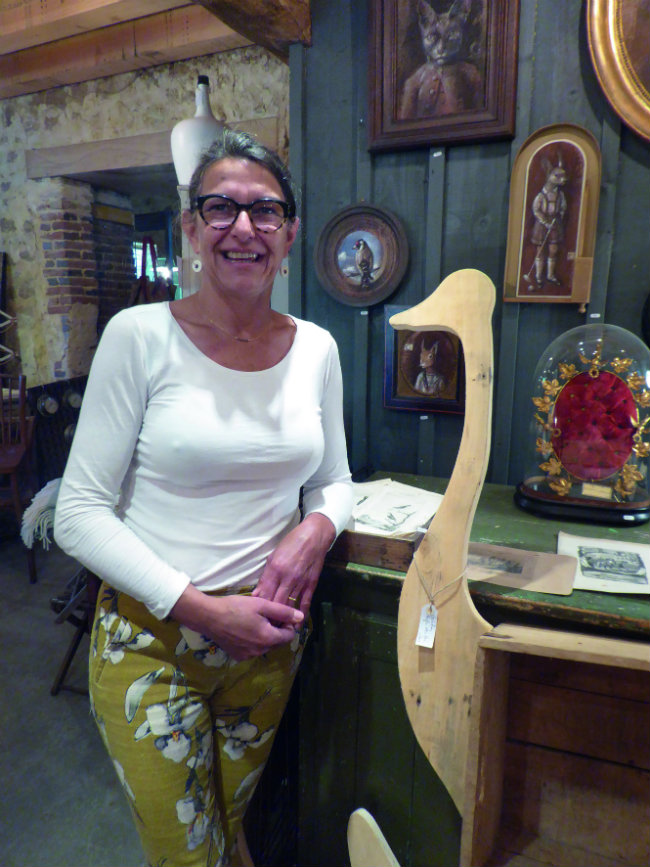
Cécile Schmitt shares the joy at Chez Nous Campagne. Photo: Cecile Schmitt
With a population of just 4,500, her local market town, Mortagne-au-Perche, is a former seat of the Counts of Perche. In the Hundred Years War, a double set of turreted city walls protected the medieval inhabitants against the English. And from my second floor bedroom at the Hôtel du Tribunal, I enjoy a panoramic view over rooftops and turrets to that signature rolling countryside. A real gem in the generally reliable Logis chain, Le Tribunal is tucked behind Notre-Dame Church on a quiet square, blissfully tranquil and a real gastronomic find.
Today Mortagne’s defensive walls have mostly gone, but many fine buildings still dot the historic streets. Pick up the Circuit du Patrimoine leaflet and follow the numbered panels. Most are privately owned but casual visitors can still be pleasantly surprised. I wouldn’t normally look twice at a modern hospital building, but Mortagne’s medical facility has retained the exquisite cloister of the former Couvent Saint-François et Sainte-Claire, founded in 1502 by Marguerite de Lorraine, Countess of Perche. The wooden roof timbers are shaped like an upturned boat, a design mirrored in the cavernous painted chapel where Marguerite and the patients once heard Mass.
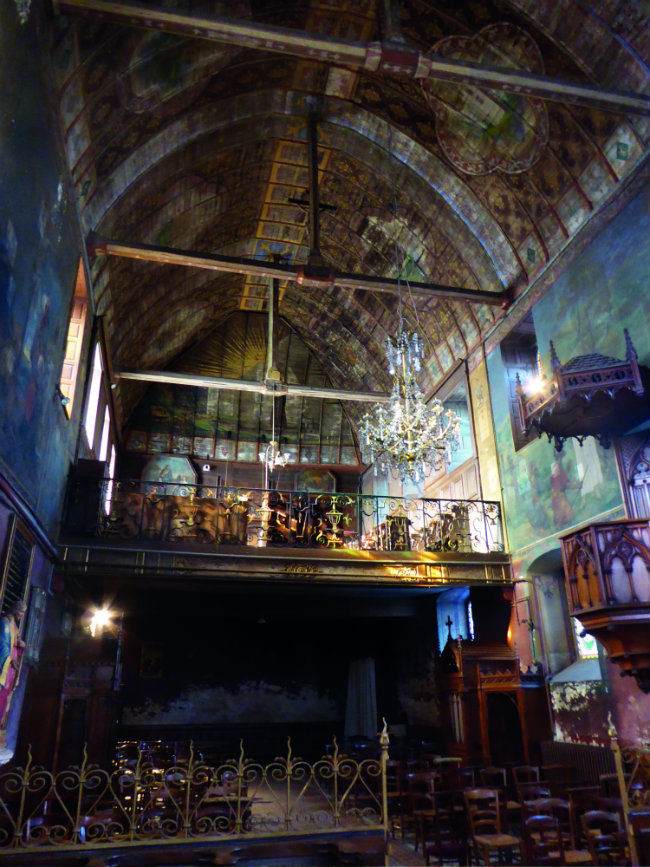
The chapel of Couvent Saint-François in Mortagne-au-Perche. Photo: Gillian Thornton
Visit the vaulted Crypte Saint-André, all that remains of a 13th-century church; walk beneath the medieval city gate of Saint-Denis; and enjoy the panoramic view from the public gardens behind the Town Hall. The bust in the alley of trees is of Jules Chaplain, a local medal engraver in the 19th century who designed the national symbol that’s always on display during speeches by the French President.
THE APPLE OF OUR EYE
Mortagne’s food speciality is black pudding but if it’s not to your taste, you’ll find plenty of other local produce boasting minimal food miles. Apples are big business here, so just five miles south of Mortagne, I stop off at La Maison Ferré in Comblot to meet Grégoire Ferré, cattle farmer, apple grower and distiller. Only 10 per cent of Grégoire’s annual crop are table apples, the majority being crushed on site for transformation into juice, cider, pommeau and Calvados. “Craft cider is becoming increasingly popular around the world,” he tells me as we compare tasting notes. “My goal now is to have Calvados competing in the whisky market, whilst maintaining all the traditions of the authentic product.”
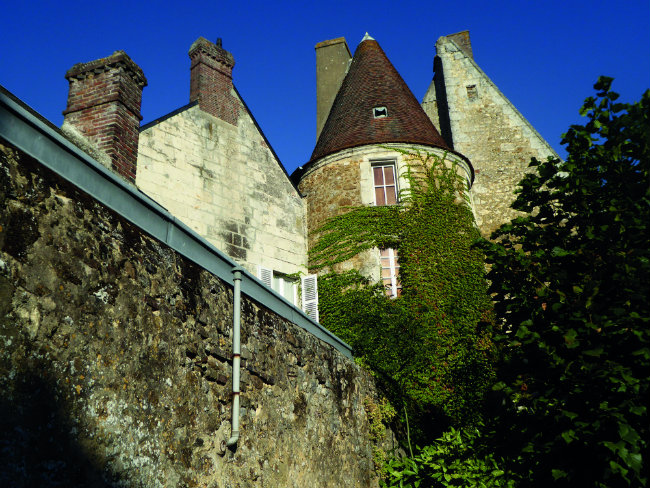
Mortagne-au-Perche. Photo: Gillian Thornton
From Mortagne-au-Perche, most points of the Perche are accessible in under an hour by mechanised horsepower. Roads are quiet and motoring a pleasure, tempting the traveller to make a detour and follow an intriguing sign or inviting lane. Not far from the Ferré farm, I spot a tall pair of spires above the treetops and discover an incongruously large church dominating a small village.
Approached by a formal drive and surrounded by substantial buildings, La Chapelle-Montligeon was built between 1896 and 1911 by Abbé Buguet, a parish priest who founded a religious body aimed at delivering souls left in purgatory and promoting social justice. Today it’s a place of pilgrimage but also a business centre based on the printing works he founded. You don’t need to be a lost soul, though, to enjoy the diverse selection of stained-glass windows inside.
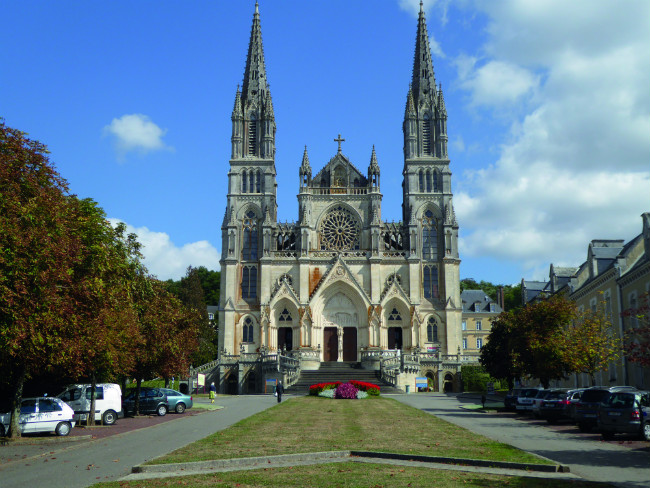
The basilica at Montligeon. Photo: Gillian Thornton
HIT THE ROAD
While the top of Montligeon basilica dominates the landscape, the roof of the three-storey Manoir de Courboyer is barely visible from the approach road. This 15th-century turreted property at Nocé is now an exhibition space for the Maison du Parc, admin HQ and visitor centre for the Perche PNR. Gen up on local activities; get close to native farm animals; and enjoy a tasty regional dish at the restaurant.
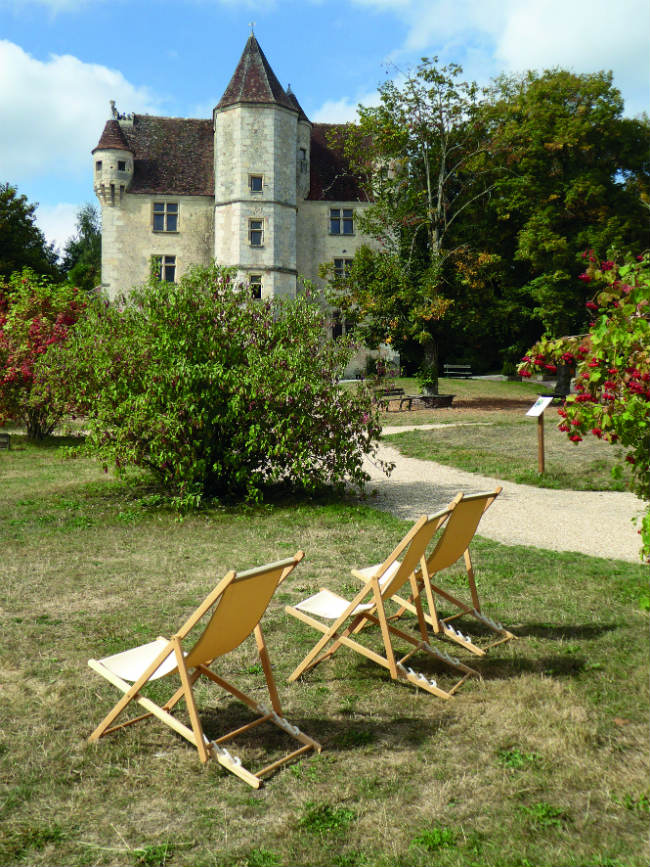
Manoir et Domaine de Courboyer. Photo: Gillian Thornton
A variety of self-drive routes showcase the PNR’s forests and abbeys, its manor houses and castles, but every country road opens up new vistas. Bellême, former capital of the Perche, and nearby La Perrière, built on a limestone promontory, are both labelled Petites Cités de Caractère by the Orne département for their atmospheric small streets and historic buildings. But they also buzz with restaurateurs, shop owners and craftsmen determined to keep their communities alive.
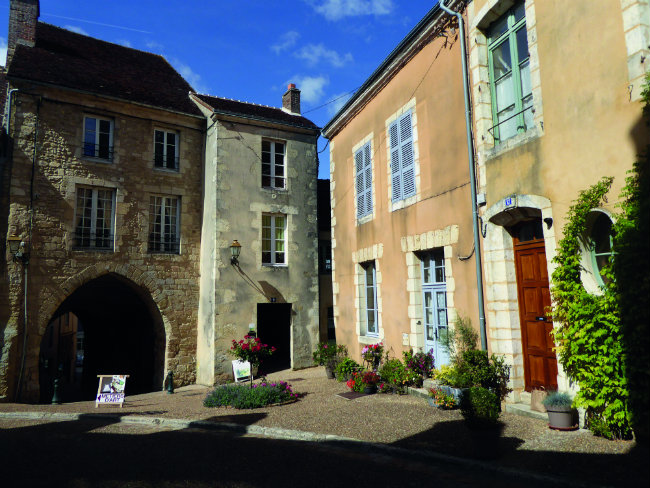
Bellême, where local craftsmen sell their goods. Photo: Gillian Thornton
I hit Bellême on the Métiers d’Art weekend where friendly local craftsmen are selling everything from wood carvings to framed nature photographs in the village hall. And amongst the permanent businesses around town, I spot furniture restorers, antiques dealers and galleries, before being attracted by the broad shop front of La Savonnerie de La Chapelle.
Here Patrick Neyt, husband of founder Isabelle, explains the cold process used to make soap and natural cosmetics on site. Choose from lip balms, shaving soaps, shampoos, shower creams and candles, as well as a wide range of soaps suitable for various skin problems.
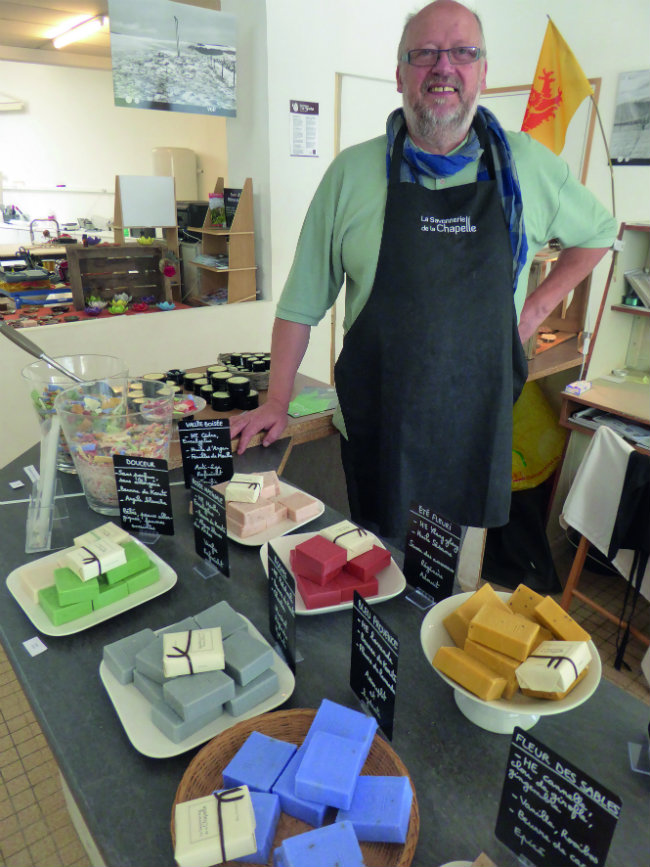
Patrick Neyt with some of his soaps. Photo: Gillian Thornton
A short drive away at La Perrière, I drift happily from the local produce in the village grocer to the packed bookshelves of La Demeure du Livre. Feeling peckish? The stylish Maison d’Horbé is a beguiling mix of restaurant and brocante, whilst Chez Martin next door is a quirky combination of bar, brocante and cyber café. Just beyond the village, the Bellême Forest proves a tranquil spot to walk or cycle – look out for the signature oak trees, signposted from the road.
Later that afternoon, I soak up the sounds of another Perche forest area behind Utah and Kenyan, two of 17 beautiful horses owned by Percheron breeder Céline Maudet. Each one is named after a corner of the world she knows and loves.
Weighing in at around 800kg each, the horses are an impressive site from any angle and heads turn as we walk steadily past Abbé Buguet’s basilica in the early evening sunshine. But it’s a brisk trot along a woodland trail that really reminds me of the twin horsepower in front of me – a magnificent symbol of a tranquil area that is showcasing its traditions to a 21st-century audience.
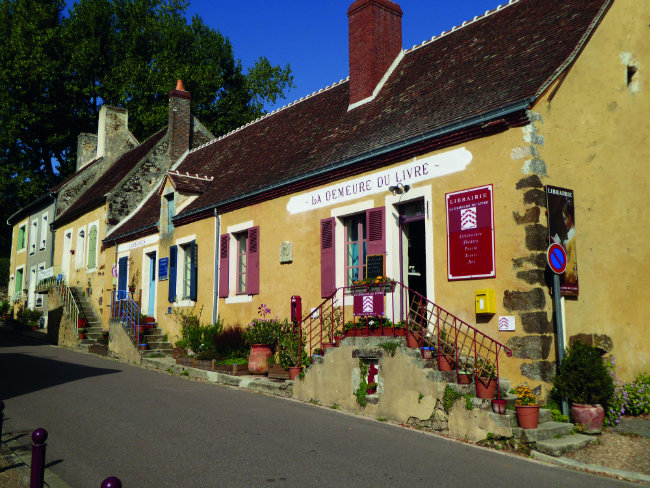
The bookshop in La Perrière. Photo: Gillian Thornton
LE PERCHE ESSENTIALS
GETTING THERE
Gillian travelled with Brittany Ferries from Portsmouth to Caen-Ouistreham, around
2 hours by car from Mortagne-au-Perche. (www.brittanyferries.com).
STAY AND EAT
Hôtel du Tribunal
4 Place du Palais, 614000 Mortagne-au-Perche
Tel: +33 (0)2 33 25 04 77
www.hotel-tribunal.fr
Modern rooms divided between three adjacent heritage buildings split by courtyard gardens. Gastronomic restaurant open lunch and dinner daily. Warm welcome.

Hôtel du Tribunal. Photo: Gillian Thornton
Chez Nous Campagne
Les Joncherets, 61190 Bubertré
Tel: +33 (0)6 30 77 17 54
www.chez-nous-campagne.com
Stylish and spacious first-floor gîte decorated with upcycled furniture in converted barn beside 17th-century farmhouse, brocante and tea room.
USEFUL WEBSITES
www.normandy-tourism.co.uk
www.parc-naturel-perche.fr/en
www.ot-mortagneauperche.fr
www.savonneriedelachapelle.com
SLOW FOOD FRESH FROM THE FARM
Pick up the Farm Produce from the Perche leaflet from any local tourist office to discover farms open to visitors, as well as the times of local markets where you can buy everything from cider and apple juice to goat’s cheese and charcuterie. The Saturday morning market in Mortagne-au-Perche is the place to taste traditional local black pudding made by artisan producers to their own secret recipes.
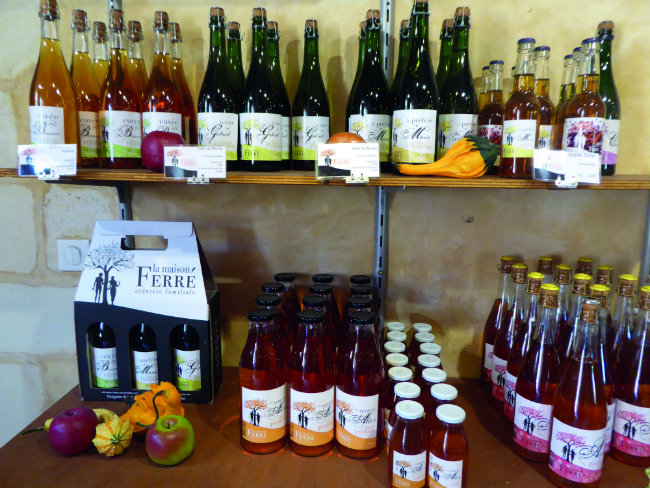
La Maison Ferré. Photo: Gillian Thornton
I visited La Maison Ferré, a family-run farm at Comblot near Mortagne, to stock up on their range of cider and apple juice, pommeau aperitif and Calvados digestif. Their home-produced cider vinegar, jams and jellies make great small gifts too.
Open Wednesday, Friday and Saturday afternoons between April and September, but all year round by appointment.
Tel: +33 (0)2 33 25 29 50 to check opening times.
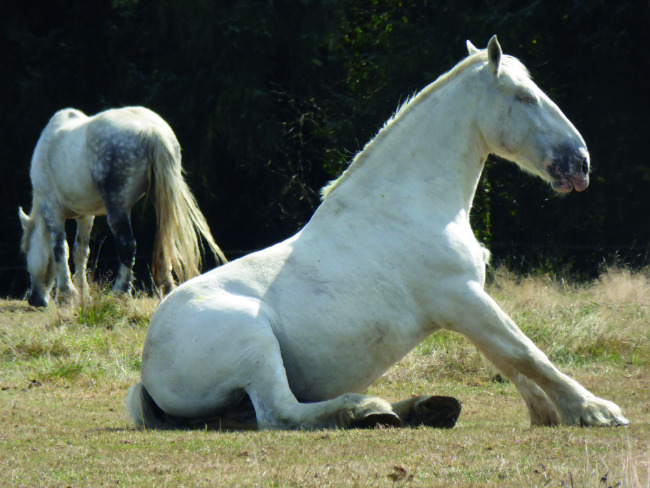
A Percheron horse enjoys a stretch. Photo: Gillian Thornton
TRADITIONAL HORSEPOWER
The origins of the Percheron are believed to go back to the 8th century when Arab steeds captured at the Battle of Vouillé near Poitiers were crossed with local heavy horses. But current breed standards date from the 19th century, when Percherons were widely used both for agriculture and transporting goods and people.
Like many heavy horse breeds, they went into decline between the World Wars with the advent of mechanised transport; but since 1991, Percheron breeding has been increasing thanks to the import of stallions from America. The crossing of American stallions with French Percheron mares resulted in a lighter, more agile breed, and now there are two recognised varieties – one for agricultural and forest use, the other for sport and carriage driving.
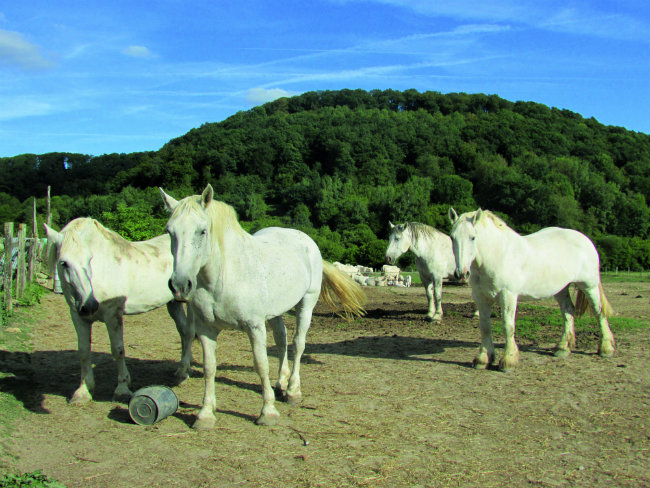
Percheron horses. Photo: Gillian Thornton
Today, the main breeding area is along the Huisne valley from Nogent-le-Rotrou to Mortagne-au-Perche and La Ferté-Bernard. Every year La Société Hippique Percheronne de France runs competitions to reward the best examples. Usually grey but sometimes black, the Percheron is good-natured and gentle.
A number of studs are open by appointment for visits and/ or carriage rides (see www.parc-naturel-perche.fr). Gillian’s outing was thanks to Céline Maudet at Ferme de l’Absoudière in Corbon (Tel: +33 (0)6 27 02 35 26; English spoken).
From France Today magazine
Share to: Facebook Twitter LinkedIn Email
Leave a reply
Your email address will not be published. Required fields are marked *


